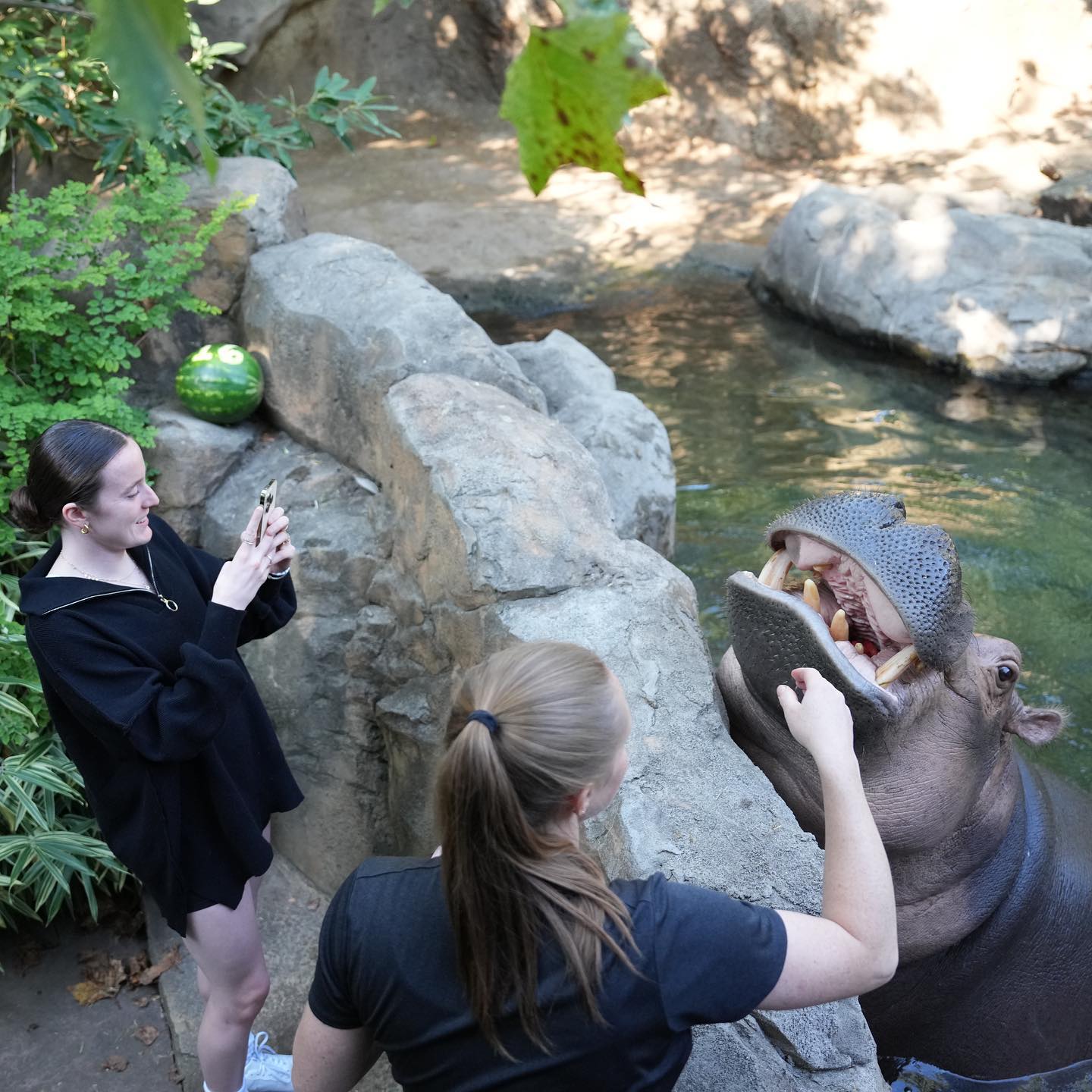Summary:
– Introduction to the Cincinnati Zoo and its famous residents, Fiona, Fritz, Bibi, and Tucker.
– The fascinating similarities between hippos and the prehistoric creature Wilma.
– The unique adaptations of hippos for a semi-aquatic lifestyle.
– The social behavior and family dynamics of hippos in the wild.
– Conservation efforts to protect hippos and their habitats.
Welcome to the Cincinnati Zoo, where animals and celebrities coexist in harmony. Among the famous residents of this remarkable zoo are Fiona, Fritz, Bibi, and Tucker, who have captured the hearts of millions worldwide. In this article, we will dive into some fascinating aspects of our aquatic friends, exploring their uniqueness and the intriguing connections they share with a creature from the past.
Let’s start by reflecting on the incredible resemblance between hippos and a prehistoric creature, Wilma. You might wonder, “Who is Wilma, and what is the link to hippos?” Wilma is the name given to a fossilized creature discovered millions of years ago, closely resembling modern-day hippos. These ancient water-dwelling animals roamed the Earth, showcasing how resilient and adaptable the hippopotamus species truly is.
Now, let’s dive deeper (pun intended) into the adaptations that make hippos such fascinating creatures. Despite their hefty appearance, hippos are incredibly nimble and agile in the water. Their barrel-shaped bodies are designed to streamline their movements through the water, allowing them to maneuver gracefully beneath the surface. With their webbed feet and powerful limbs, they can reach remarkable speeds of up to 20 miles per hour when swimming.
But have you ever wondered how hippos can spend so much time underwater without breathing? The answer lies in their unique respiratory system. Hippos have a specialized feature known as a valvular nose and ears, which enable them to close their nostrils and ears voluntarily, preventing water from entering. This adaptation allows them to stay submerged for prolonged periods, only poking their nostrils above the water’s surface to breathe.
While we enjoy learning about their physical adaptations, it’s equally intriguing to explore the social behavior and family dynamics of hippos. These semi-aquatic giants have complex social structures that revolve around family units. They form social groups led by a dominant male fiercely protecting his territory and herd. Other male hippos, known as bachelors, can be found forming their own smaller social groups until they are strong enough to challenge the dominant male.
Family plays a crucial role in the lives of hippos. Female hippos give birth to a single calf every two years, and the bond between mother and calf is incredibly strong. The female hippos rely on each other’s support, often forming maternal communities where they take turns babysitting, allowing the mothers to feed or engage in other tasks. These tight-knit connections among females ensure the survival and well-being of their young.
While hippos may seem like a common sight in zoos and animal sanctuaries, their populations in the wild are currently facing many challenges. Habitat loss, illegal hunting, and poaching pose significant threats to the survival of these magnificent creatures. As advocates for wildlife conservation, it becomes our responsibility to protect and preserve their natural habitats, ensuring a future where hippos continue to thrive.
Conservation efforts are underway to safeguard these vital ecosystems and educate local communities about preserving wildlife. By supporting conservation organizations and spreading awareness about the issues hippos face, we can contribute to their survival and preserve their habitats for generations to come.
In conclusion, hippos truly are like aquatic Wilmas, with their unique adaptations, social dynamics, and the ability to inspire awe and fascination. By exploring their remarkable features and uncovering the connections between these majestic creatures and their prehistoric counterparts, we gain a deeper appreciation for the wonders of our natural world. Let’s continue celebrating and protecting these incredible animals, ensuring that future generations can witness their beauty and vitality firsthand.
*****
Source Description
“They’re like aquatic Wilmas!”
Thanks to the @CincinnatiZoo for welcoming @lavellerose to meet fellow Cincy celebs Fiona, Fritz, Bibi and Tucker 🦛


